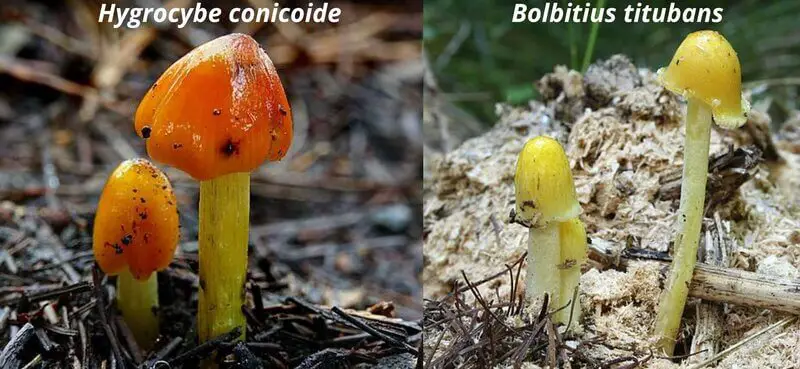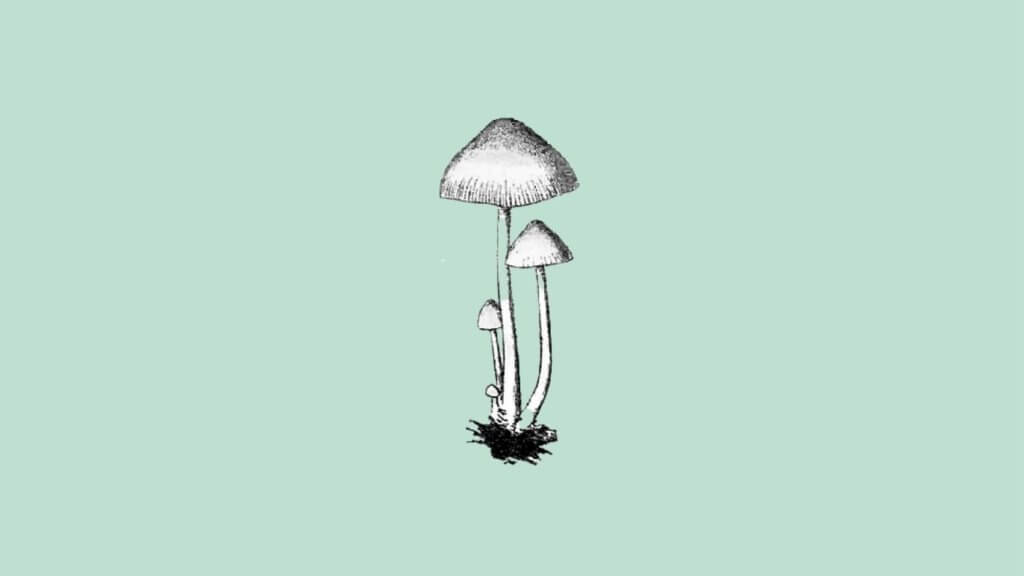Bolbitius titubans mushrooms grow wild throughout North America and Europe. They are edible but aren’t typically foraged. Other common names include Bolbitius vitellinus and yellow fieldcap.
Bolbitius titubans profile
Yellow fieldcap mushrooms belong to the family Bolbitiaceae and the genus Bolbitius.
Bolbitius titubans were first discovered by French mycologist Jean Baptiste Francois Pierre Bulliard in 1789. The scientific name he gave them was Agaricus titubans.
In 1838 they were renamed Bolbitius titubans by Swedish mycologist Elias Magnus Fries. At this point in history and taxonomy, gilled fungi initially put in the Agaricus genus were being moved to other genera.
What Are You Foraging For Right Now?
We're thrilled to hear your ideas. What would you like to submit today? Feel free to share your thoughts and experiences with us.
Then in 2000, a rare variety was discovered and named Bolbitius titubans var. olivaceus. Currently, the nominate variety of the yellow fieldcap is considered Bolbitius titubans var. titubans.
Bolbitius titubans are ephemeral mushrooms, meaning they are short-lived. This species only lasts a day or two, often opening in the morning and fading up by evening.
They are recognizable when young by their petite size and viscid, bright yellow, striate cap. The stem is thin and papery, and soft, whitish-yellow gills underneath the cap. The spore print is rusty brown.
Yellow fieldcaps can be found growing from late spring to early autumn.
Common names include:
- Bolbitius vitellinus var titubans (Bull.)
- Agaricus fragilis L.
- Agaricus titubans (Bull.)
- Bolbitius titubans (Bull.)

How to identify a yellow fieldcap?
Bolbitius titubans mushrooms can look like other fungi but do have distinctive characteristics such as:
- Cap: Young mushrooms have an egg-shaped bright yellow cap 0.5 to 2 inches in size, which is smooth and slimy to the touch. As it matures, the cap grows into a bell-shaped first and then goes flat, retaining an indented yellow center. The cap also fades to a gray or beige color.
- Stem: Hollow with an even or tapering stem, 1-4.7 inches long and 0.3 inches thick. It is smooth with fine hairs and a powdery surface. White or pale yellow in color.
- Ring: Yellow fieldcaps lack a ring.
- Gills: The gills of the yellow fieldcap are free from the stem or loosely attached. They are soft and delicate and become gelatinous in damp weather. They are white or pale yellow in color, turning a rusty brown as they mature.
Where does the yellow fieldcap grow?
Yellow fieldcaps grow all over North America, from New York to California and other parts of the world. They can be found in both urban and rural areas.
Bolbitius titubans are saprobic. They grow singularly or in clusters on dung, rich, fertilized soil, or in grassy areas.
Is the yellow fieldcap edible?
Yellow fieldcaps are edible.
However, they rarely forage since the time and effort it takes yields little result, just as spring fieldcaps.
This is due to their:
- Short life span: Since they only grow for 1-2 days, the timing can be a challenge.
- Lack of flavor: These mushrooms have little to no flavor, and so foragers prefer gathering other types of mushrooms with more taste.
- Flimsy build: Yellow fieldcaps are small and frail. They also most often grow in dung and therefore need to be washed before eating. Yet, their fragile nature doesn’t hold up well under a thorough washing.
Bolbitius titubans Look-Alikes
Other species of mushrooms look like Bolbitius titubans. One of these is Hygrocybe mushrooms, or waxcaps, which belong to the same order (Agaricales).
Waxcaps are commonly found in Europe but also in North America. Like yellow fieldcaps, they have small, brightly colored viscid caps and ringless stems.
Yet while some waxcaps are yellow, they grow in a variety of colors. When they mature, they retain their bright color instead of fading. Another difference is they have white spores vs. rusty brown spores.

Other species similar to Bolbitius titubans include:
- Bolbitius variicolor: Yellow stem is more scaly, and the cap has an olive hue.
- Bolbitius expansus: Yellow stem and gray-yellow cap, but doesn’t have a yellow middle when mature.
- Plateaus chrysophaeus: Otherwise known as roof mushrooms, these fungi live longer and grow primarily on wood. Spores are pink.
- Leucocoprinus birnbaumii: A tropical species grown primarily on greenhouses. Its cap is not viscid, gills are not attached, there is the presence of a ring, and spores are white.
Rachel Schmeltzer is a writer, mom, teacher, and dreamer. She enjoys reading, traveling, history, spending time with her boys and her cats, and foraging in the woods of Minnesota.

